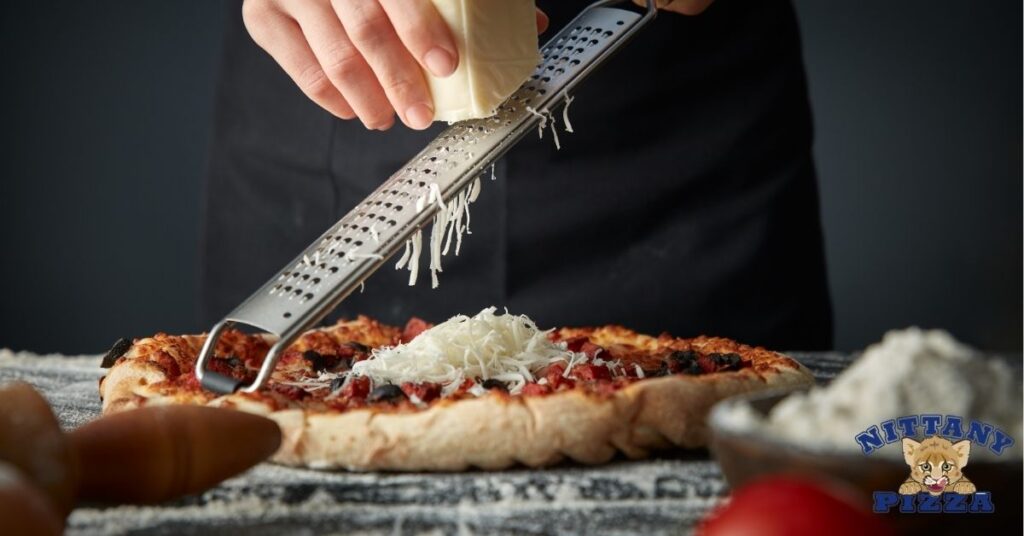There’s something magical about pizza that makes it irresistible. From the first bite, the harmony of flavors pulls you in—gooey cheese, tangy sauce, and that perfectly baked crust. It’s not just food; it’s an experience that satisfies cravings you didn’t even know you had. Whether you’re grabbing a quick slice or indulging in a gourmet creation, pizza always hits the spot.
But why does pizza feel like the ultimate comfort food? It’s not just about taste—it’s the way it brings people together, turning any meal into a celebration. The combination of textures and flavors is scientifically engineered to delight your taste buds, making it almost impossible to say no. Once you jump into the reasons behind its universal appeal, you’ll realize pizza isn’t just good—it’s perfection on a plate.
The Universal Appeal Of Pizza

Pizza represents a unique fusion of taste, texture, and experience that resonates with people globally. Across cultures, it’s recognized as more than just a dish—it’s a shared joy.
A Perfect Blend Of Flavors
Every bite of pizza offers a harmonious interplay between core ingredients. The creamy richness of melted cheese complements the tangy depth of tomato sauce. The gentle crunch of a well-cooked crust adds a satisfying contrast to softer toppings like vegetables or meats. Offering endless combinations, this blend caters to varied taste buds.
Versatility For Every Preference
Pizza adapts effortlessly to different dietary choices and cuisines. From classic Margherita to adventurous combinations like barbecue chicken or vegan mozzarella, there’s an option for everyone. It’s served as a quick snack or elevated into a gourmet meal, aligning with diverse occasions and preferences.
The Science Behind Pizza’s Deliciousness

Pizza’s irresistible qualities are rooted in both science and psychology. Its appeal stems from a unique combination of flavors, emotions, and carefully crafted cooking methods.
The Role Of Umami
Umami plays a crucial role in pizza’s flavor. This savory taste is naturally present in ingredients like tomatoes, cheese, and cured meats. Glutamates in these foods trigger your taste buds, creating an intense, satisfying depth of flavor. Cheese, especially aged varieties like Parmesan, enhances umami, while the caramelization of crust and sauce adds complexity.
The Psychology Of Comfort Food
Pizza evokes a sense of comfort linked to positive memories and emotional satisfaction. Familiar ingredients, shared meals, and cultural associations often make pizza a food of choice in celebratory or social settings. Its balance of carbohydrates, fats, and proteins also provides a pleasing sensation, contributing to its comforting reputation.
The Impact Of Cooking Techniques
Cooking techniques significantly influence pizza’s taste and texture. High oven temperatures create a crispy crust through Maillard reactions, developing rich, savory flavors. Slow cooking of tomato sauce enhances its natural sweetness and acidity, while evenly melted cheese offers a gooey, indulgent texture. Together, these methods elevate pizza into a culinary masterpiece.
Cultural Significance Of Pizza

Pizza holds a unique place in cultural traditions around the industry. Its ability to bridge tastes, traditions, and communities creates a shared experience that extends beyond its flavors.
A Global Phenomenon
Across continents, pizza symbolizes a unifying culinary force. Italy introduced it as a humble dish, but its global evolution has turned it into a canvas for countless local interpretations. In the United States, pizza gained prominence as an everyday delight, with variations like Chicago deep-dish and New York thin-crust reflecting regional identities. Japan incorporated ingredients like squid and mayonnaise, showing its adaptability to different taste preferences.
In India, toppings include paneer and tandoori chicken, blending traditional spices with a beloved international dish. Globally, chains like Domino’s and local pizzerias coexist, showcasing both standardization and regional ingenuity. These adaptations solidify pizza as a culinary phenomenon with endless cultural connections.
Pizza’s Role In Social Gatherings
Within social contexts, pizza enhances shared moments. It serves as the centerpiece of casual get-togethers, game nights, and family dinners. The act of sharing a pizza fosters community, as each person customizes their experience while partaking in a collective activity.
Its simplicity makes it an accessible choice for celebrations, from office parties to birthdays. The variety of available toppings caters to dietary preferences, ensuring everyone feels included. Delivery and takeout options add to its convenience, making pizza an effortless way to create memorable group experiences. Enabling connections through its versatility, pizza strengthens its role in bringing people together.
The Endless Variety Of Pizza
Pizza offers an unparalleled level of variety, ensuring there’s something for everyone. From regional styles to limitless topping options, the adaptability of pizza makes it a universal favorite.
Different Styles Across The Industry
Regional pizza styles provide unique interpretations of this iconic dish. Neapolitan pizza, with its thin crust and charred edges, reflects its Italian origins. New York-style pizza, known for its large, foldable slices and crispy outer crust, has earned global recognition. Chicago’s deep-dish pizza delivers a hearty experience with its thick crust and layered fillings, offering a distinct contrast to thinner varieties. In Japan, you’ll find toppings like mayonnaise, corn, or seafood, showcasing the local palate. Similarly, India adds its own twist with curry-infused toppings or paneer.
Pizza adjusts to cultural preferences, leading to new styles in every corner of the industry. Whether you’re enjoying a Margherita in Italy or a spicy peri-peri chicken pizza in South Africa, these variations highlight the regional creativity that keeps pizza endlessly diverse.
Customizable Toppings And Creativity
Pizza’s ability to adapt to personal tastes sets it apart. Toppings range from traditional favorites like pepperoni, mushrooms, and olives to more unique options like truffle oil, figs, or even macaroni and cheese. You can customize combinations to match dietary restrictions, whether vegan cheese for a plant-based diet or gluten-free crusts for those avoiding wheat.
Creativity shines through fusion pizzas that combine global cuisines. Korean-inspired versions with kimchi or bulgogi are great examples. Gourmet pizzas have also gained popularity, featuring premium ingredients like prosciutto, arugula, or burrata. The sheer flexibility lets you experiment endlessly, ensuring an option for every preference or occasion.
Why Pizza Continues To Be Irresistible

Pizza’s universal charm lies in its simplicity, versatility, and the emotional satisfaction it offers. Its ability to transcend cultural and personal boundaries makes it a go-to choice for countless occasions.
Timelessness And Accessibility
Pizza maintains its relevance across generations by adapting to evolving tastes while keeping its essence intact. Whether you prefer a classic Margherita or an experimental fusion creation, pizza meets a broad range of preferences. The affordability of ingredients like dough, cheese, and tomato sauce ensures you find pizza in nearly every corner of the industry. Its customizable nature, from crust thickness to topping combinations, guarantees satisfaction for diverse dietary needs and cravings.
Technology has also increased pizza’s accessibility. With delivery apps and quick-service pizzerias, hot pizza is available almost anywhere, anytime. It’s this combination of consistency, variety, and ease that reinforces pizza’s timeless appeal.
Emotional Connection With Food
Pizza evokes powerful emotional connections by linking flavors with comforting memories. Sharing a pizza often signifies celebration, bonding, or relaxation, enriching its role in your life. Every slice reminds you of warm social gatherings, making it as much about experiences as it is about flavors.
The psychological comfort of pizza stems from its ingredients. The richness of cheese, savoriness of meats, and sweetness of sauce create satisfaction on a sensory and emotional level. This ability to blend nostalgia and indulgence is why pizza resonates so strongly with you and others.
Conclusion
Pizza isn’t just a meal—it’s an experience that brings joy, comfort, and connection. Its unique combination of flavors, textures, and versatility makes it a timeless favorite for people of all ages and cultures. Whether you’re indulging in a classic slice or exploring bold new toppings, pizza has a way of satisfying cravings like no other dish.
From casual nights in to festive gatherings, pizza effortlessly transforms any moment into something special. Its adaptability, emotional connection, and universal appeal ensure it remains a cherished staple in your life. It’s no wonder pizza continues to hold a special place in hearts and on plates around the industry.
Related Posts:
